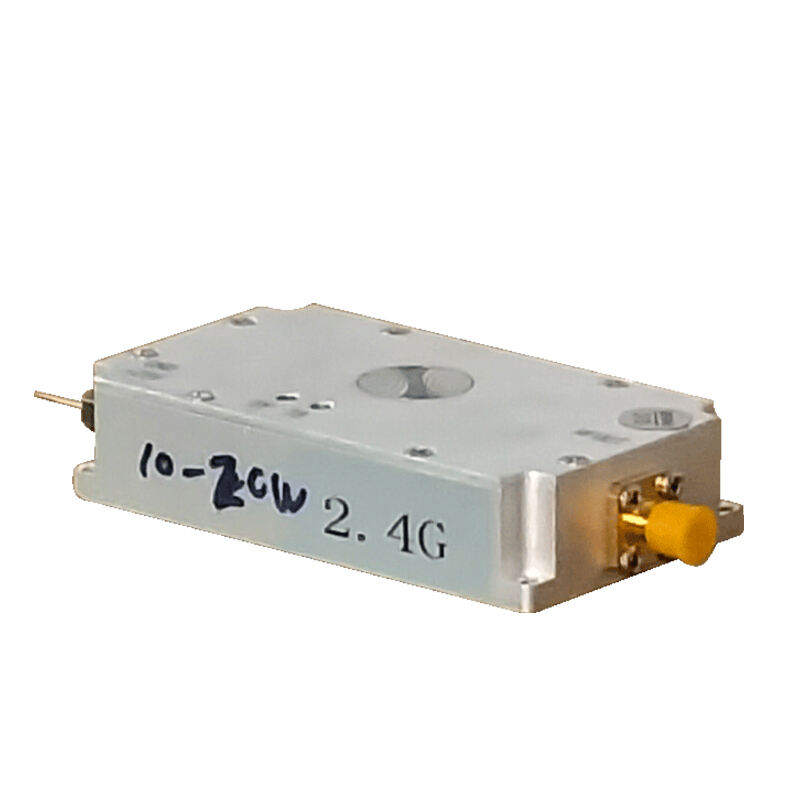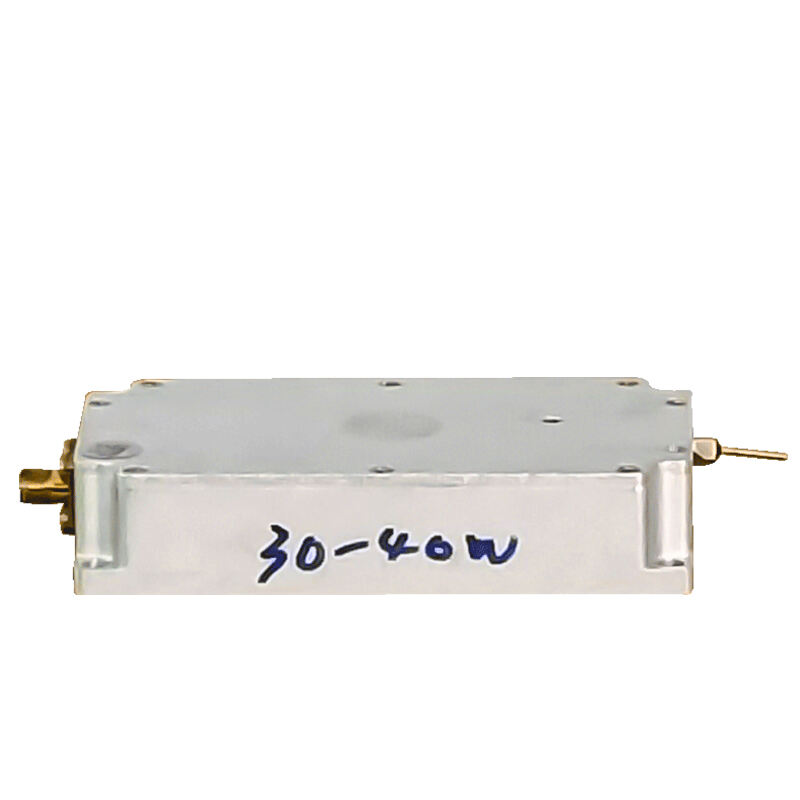Bevirčių ryšys apibrėžiamas kaip informacijos perdavimas tarp įrenginių be viršūnių ar kabelių naudojimo, naudojant elektromagnetinius signalus duomenims perdavimui per įvairias atstumą. Ši technologija tapo integruota šiandienos greitai kintančio pasaulyje, užtikrinant nepriklausomą jungimą daugelio paskirtims, tokios kaip mobilieji telefonai, internetas ir Daiktų internetas (IoT). Išskyrus fizinį ryšį, bevirčių ryšys yra svarbus lankstomiems ryšių tinklams sukurti.
Bevirčių ryšių svarba išplėsta per kelis šiuolaikinės gyvenimo aspektus, nes ji leidžia visuotinę jungimybę. Ji paruošta veikti mobiliams įrenginiams, leidžia tolimojo duomenų perdavimo IoT įrenginiams ir palaiko interneto prieigą visame pasaulyje. Ši unikalią jungimybė optimizuoja operacijas pramonėje, gerina asmeninę komunikaciją ir palaiko būtina infrastruktūrą šviesoms technologijoms.
Bebosinio ryšio augimas gali būti pagrįstas statistika, rodančia nuostabų prijungtų įrenginių visame pasaulyje skaičiaus didėjimą. Pagal ataskaitas, iki 2025 metų IoT prijungtų įrenginių skaičius tikimtisi viršyti 30 milijardų, kas parodo šio sektoriaus eksponecinį augimą ir paklausą. Šie įrenginiai, pradedant namų technika ir baigiant pramoniniais mašinomis, labai priklauso nuo bevirlio ryšio optimaliam veikimui ir efektyvumui. Šios technologijos vis didesnis pripažinimas pažymi jos esminį vaidmenį skaitmeninės transformacijos epochoje.
Bebosinio ryšio pagrindas yra elektromagnetiniuose bangose, kurie leidžia signalų perdavimą be fizinio grandinės. Šios bangos apibūdinamos trimis pagrindiniais savybėmis: dažniu, bangos ilgiu ir greičiu. Dažnis nurodo skaičių svyravimų per sekundę, bangos ilgis yra atstumas tarp sekanių viršūnių, o elektromagnetinių bangų greitis tuštumyje atitinka šviesos greitį, judant apie 300 000 kilometrų per sekundę. Šios savybės leidžia įvairius bevirčių ryšių tipus nuo radio iki Wi-Fi.
Bebras ryšių sistema sudaryta iš kelių esminių komponentų, kurie užtikrina nediskrecinį duomenų perdavimą. Šie komponentai apima transliatorių, kurie konvertuoja informaciją į signalus, ir priėmėjų, kurie signalus vėl konvertuoja į naudojamus duomenis. Antenos žaidžia svarbų vaidmenį siunčiant ir gaunant šiuos signalus. Moduliavimo technikos, tokios kaip amplitudinė ir dažninė moduliacija, keičia nešiojančius signalus, kad koduotų duomenis, leidžiant efektyvų ilgų atstumų perdavimą.
Signalo sklidimas yra svarbus bevirčių ryšių srityje, nes jis susijęs su tuo, kaip elektromagnetiniai bangos kelionė per skirtingas aplinkas. Veiksnių, tokių kaip teritorija, prekštiniai objektai ir oro sąlygos, gali didelėmis dalimioms paveikti signalo stiprumą ir kokybę. Pavyzdžiui, signalai dažnai yra stipresni atviritose vietovėse, bet gali prastėti miestiniuose aplinkuose dėl pastatų, medžių ir kitų įrenginių sukeltos taršos. Supratimas apie šiuos elementus yra būtinas optimizuojant bevirčių ryšių sistemos įvairiose programose.
Bebosinės ryšio technologijos skatina įrenginių sąveiką be fizinio prisijungimo, kas yra būtina šiuolaikiniams programavimui. Šios technologijos yra įvairios, su specifiniais atributais ir paskirtimais.
Mobiliu ryšiu technologija didžiai išaugo dėl standartų, tokių kaip 4G ir 5G. 4G pristatė aukštą greitį internetui, leidžiantį naudotis programomis, tokios kaip HD mobilusis TV ir vaizdo konferencijos. 5G esminiu būdu pagerina mobiliojo ryšio galimybes dėl aukstesnių duomenų perkėlimo greičių, gerintos atidumo ir daugybės įrenginių jungimo. Ši technologija padeda kurti naujoves, tokias kaip protingos miestų ir automatinės transporto priemonės.
Veidrodinė ryšio komunikacija yra svarbi visame pasaulyje, ypač tose atokiausiose vietose, kur žemės paviršiuje neegzistuoja tinklai. Veidrodžiai veikia kaip perkačiavimo stotys erdvėje, leidžiančios signalams persiųsti per didelius atstumus. Pavyzdžiui, paslaugos tokios kaip GPS labai priklauso nuo veidrodžių, kad teiktų tikslią vietos duomenis visame pasaulyje, parodydamos jų svarbą navigacijai ir laiko nustatymui.
Abi yra paplitusios asmeniniuose ir profesionaliuose erdvėse, bet atlieka skirtingas funkcijas. Wi-Fi jungia įrenginius prie interneto platesnėje zonėje, dažniausiai namuose ar biuruose, leidžiant aukštus duomenų perdavimo greičius, būtinus strauminiams ir atsiuntimams. Bluetooth tinka trumpesniems ryšiams, tokiais atvejais kaip bevirčių priedų (pvz., ausinėliai ar klaviatūros) prisijungimui prie pagrindinio įrenginio. Jo pranašumas yra mažas energijos suvartojimas, kas yra svarbu baterinėmis akimis veikiamiems įrenginiams.
Tarša bevirore komunikacijoje gali esant svarbūs signalo kokybės ir bendrojo tinklo veiklos aspektai. Įvairios taršos tipai apima kanalų viduje esančią taršą, kai keletas transliuotojų tarpusavyje sutampa tame pačiame dažnių juostoje, bei šalia esančių kanalų taršą, atsirandančią dėl signalų nutekėjimo į gretimus kanalus. aplinkos veiksniai, tokie kaip pastatai, medžiai ir oro sąlygos, taip pat gali sukelti nuoseklumą. Pavyzdžiui, stiprus lietus gali prastinti signalo jėgą, o didelės pastatų grupės gali blokuoti arba atsitaisytinai atspindėti signalus, kas veda link netolygiapočių aptarnavimo zonų.
Taršos poveikis yra gili, dažnai vartojant blogesnę signalo kokybę, didesnį uždelsimo laiką ir duomenų tvarkumo praradimą. Kai signalai nėra aiškūs, įrenginiai gali susidurti su išlaikymo ryšio problemomis, kas gali sukelti pokalbių nutrūkimus arba duomenų perdavimo vėlavimą. Elektros ir elektroninės inžinerijos instituto (IEEE) studija parodo, kad tarša yra pagrindinė priežastis, dėl kurios mažėja nedraugystė bevirčių tinkluose, pabrėžiant taršos valdymo strategijų poreikį, kad būtų užtikrintas tinklo patikimumas. Robustaus bevirčių ryšio sistemos užtikrinimas reikalauja šių taršos iššūkių sprendimo, kad būtų palaikoma nuolatinė jungis visose prietaisose.
RF galios stiprintuoliai yra nepakartojami bevarčioje ryšių sistemoje, veikiant kaip pagrindiniai komponentai, kurie gerina signalo stiprumą ir kokybę bevarčiose prietaisose. Šie stiprintuoliai esminiu būdu pagerina ryšį, padidinant signalo lygį, kad įveiktų kliūtis ir išplėstų transliacijos diapazoną, taip užtikrinant duomenų tvarkumą ir ryšio patikimumą. Įvairios modeliai atitinka skirtingus poreikius, užtikrindami tikslingumą ir efektyvumą.
Vienas svarbus produktas yra 2.4G modulis 10W , kuris yra sukurtas saugomiems ir konfidencialiems susitikimams. Šis modulis gali pasiteisinti su nepertraukiamu dizainu, leidžiant jį lengvai diegti įvairiose aplinkose neprilygdamas saugumo. Jis yra idealus aplinkose, kur privatumas yra pagrindinis, užtikrinant, kad jautrios komunikacijos liktų apsaugotos nuo neteisėto prieigo.

Scenarijuose, kur reikalinga didesnė sauga, tokie kaip valstybiniu ar kariniu sektoriuose, 2.4G modulis 20W gali patirti. Šis modulis yra pritaikytas atitikti griežtas saugos standartus ir siūlo aukštą našumą, užtikrinant saugią ir nekintamą ryšį. Jo tvirtas statymas ir suderinamumas padaro jį pirmenybę kritiniams taikymams, kur tikslus ryšys yra nepriekable.

Galiausiai, 2.4G modulis 30W įveda inovacijas, kurios platoja dažnių suderinamumą ir pagerina tikslingumą prieš triukšmą. Su išplėstomis funkcijomis, tokios kaip padidintas galios išvesties lygis ir suderinamumas su keliomis dažnimis, šis modulis teikia lankstumą dinamiškoms ryšių aplinkoms. Jo geriausias pasipriešinimas triukšmams užtikrina nesustojančius ryšius, kas yra būtina reikalavimas sudėtingose ir gausiai apgyvendintose tinklo aplinkose.

Šie moduliai rodo pažangą RF galvos pagreitinyje elektros grandinių srityje, parodydami, kaip jie atlieka svarbų vaidmenį saugant ir optimizuojant bevirčių ryšius.
Pereitis nuo 4G prie 5G žymi svarbią besivystančios ryšių komunikacijos evoliuciją, apibūdinamą neatkuriamais pažangos įkaitinimais greičio, ryšių ir technologijų integracijos srityse. 5G tinklai siūlo ultramažą vėlavimą ir aukštą patikimumą, leidžiant naujiems taikymams, tokiais kaip realaus laiko IoT išteklių pritaikymas ir gerintas mobilus platjos juostos ryšys. Tačiau perėjimas į 5G nebebruožinamas be iššūkių. 5G infrastruktūros poreikiai yra galioti, reikalaujant didelio investavimo į naują įrangą ir technologijas. Be to, padidėjęs ryšių skaičius kelia didesnius kibernetaisinės saugos rizikas, kurias reikėtų atkreipti dėmesį, kad būtų užtikrinta duomenų integrybė. Nepaisant šių iššūkių, atsirandantys rinkos segmentai siūlo plačias augimo galimybes, nes 5G technologija turi potencialo pramonei revoliucionizuoti, leidžiant naujoms programoms ir verslo modeliams.
Bebras brandos priemonės ekspertai teikia vertingus įžvalgas į galimus ateities augimo ir technologinių naujovės aspektus, kuriuos galėtų atnešti 5G ir toliau. Jie prognozuoja, kad bevirties tinklai taps inteligentesni ir savarankiškesni dėl dirbtinio intelekto technologijų. Ši evoliucija gali prasileisti efektyvesniu spektro naudojimu ir geriau tvarkoma tinklo srautais, užkertant kelią labiau susijungusiam pasauliui. Kol laukome 6G technologijos vystymosi, verslams, siekiantems efektyviai išnaudoti šias kilusias galimybes, tapkime informuoti ir pasiruošę šioms kitoms kryptims yra kruicialu.

